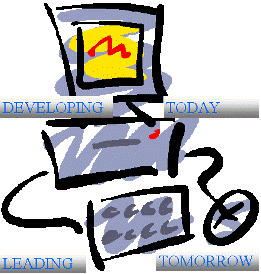Design-oriented HCI
INTRODUCTION
This paper addresses design and its relationship to Human Computer Interaction (HCI). The author¹, a university professor, contends that HCI has emerged as a design-oriented field of research. This research is directed towards innovation, design, and construction of new information and interaction technology. He concludes that the terms for research in this field are not well understood. To clarify the relationship and enhance the understanding between design and HCI, the author explains key terms: Design, Design Theory, Methodology, Sketching and Prototyping.
Design divides into 3 accounts: conservative, romantic and the pragmatic. Also, the paper explores the relationship between research and design by looking at limits and examining rationality. Such rationality extends to the concept of sketching which explains how designers think. In conclusion, the author conceptualizes design-oriented HCI as a commitment to technology and technological development that goes beyond critique.
ATTITUDE
In some respects the author formulates an axiom for the relation of design and HCI. First, he defines design as a matter of making. Then, the design HCI interaction becomes a mental set involved for creating and forming new objects. The designer is compared to a carpenter who aims to create and give form to previously nonexistent artifacts. Both are bringing about intentional change. Accordingly, the design-orientation in HCI research must be emphasized along with a commitment to technological development.
ACCOUNTS
How the designer researches and develops the technological change is explained three ways: conservative, romantic and pragmatic. A methodology, steps used to achieve progress, is provided for each approach. Scenarios illustrate the differences to account for the three approaches. Thus, three methods explain the author’s design theory: an accounting for the transition from conceptualization to fabrication.
The conservative designer lives in a glass box. He is an information processor. He views problems as ill defined which must be structured as they are being defined. The form created, the product, is the result of a process. He seeks a scientific solution. Design is an engineering undertaking that borrows methodology from the natural sciences, mathematics, and systems theory as well as drawing on the philosophical base in rationalism. In a nutshell the conservative designer is process oriented.
The romantic designer works from a black box. He is not concerned with following a process but rather wants his product to be functional. The problem is only incidental to the final product. His endeavors are artistic. Accordingly, his methods are imaginative and creative. He accents human creativity and the content of the design through an opaque process. He relishes the beauty in his objects. Basically, he is an artist.
The pragmatic designer like the romantic designer does not follow a rigid process as conservative designers do. The pragmatic is the jack-of-all-trades. He does not have many tools but with the tools he has he uses them intuitively and spontaneously. His pre-reflective knowledge of life and his society crafts his skills. Such reflections can be conservative in nature; however, he uses what exist in novel ways to produce his product through a self-reflective dialogue process. Thus, he moves iteratively from conceptualization through fabrication. He is an interpreter of what needs to be done in the situation.
TOOLS
To research and build the designer relies on two tools: sketching and prototyping. Sketching captured with pen and paper presents the designer concepts for discussion. Prototyping captures sketching aspects and employs different techniques, tools and materials, ranging from cardboard modeling to visualizations and computer programming languages.
CONCLUSIONS
HCI and design have converged. Accordingly, I agree with his statement: “Design in this sense becomes more of search for a symmetrical, coherent, and well-balanced whole – a complete gestalt – than a process of first setting up and then solving problems.” Also, I agree with his observation that design as a structured process over people has resulted in too many failures.
However, I do not recognize the relationship between HCI and design as necessarily being a designed-oriented field of research. I view it more fundamentally. It is a matter of human survival. The computer is being designed to satisfy man’s basic instincts and to economically satisfy his needs. The computer is being designed by pragmatics according to romantics’ guidelines driven by market forces.
HCI has brought us back to our primeval instinct: to hunt. For example, we hunt for our interest by searching the internet. What can be more human than that?
The atoms have combined reacted and exploded. We are left studying a field by looking at the dust that remains. However, the tradeoff remains between destruction and construction. Our only logical choice is to build anew in an ordered fashion to control our primeval impulse. HCI should be maximized for a peaceful purpose through integrated multi-threading dialogues. Its design for war is a proven factor. Where are the applications for peace?
My summary submitted as a class assignment is based on:
¹Fallman, D. (2003, April). Design-Oriented Human - Computer Interaction. Chi Letters, Vol. 5, Issue 1: p.225-232.
Retrieved March 25, 2007 from Computer & Applied Science Complete database.
Return to Table of Contents
DELAWARE'S MIDDLETOWN ODESSA AND TOWNSEND AREA
